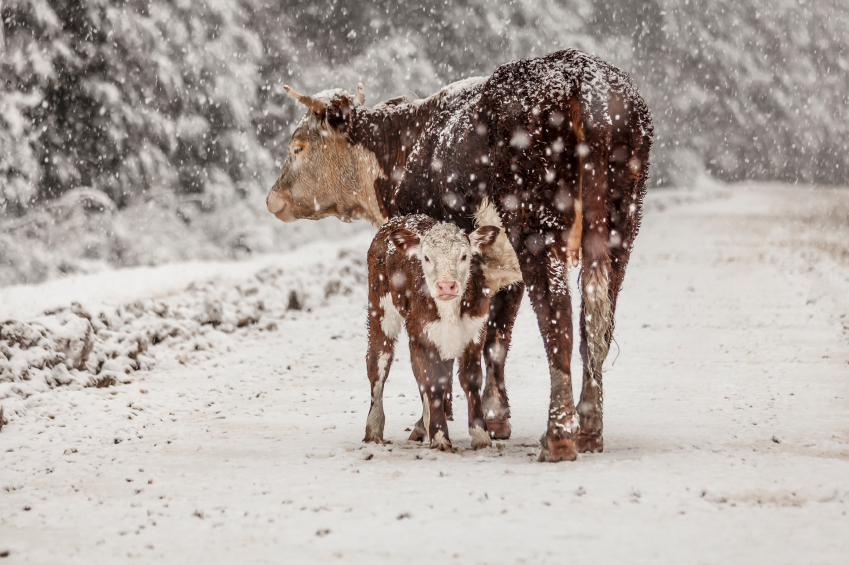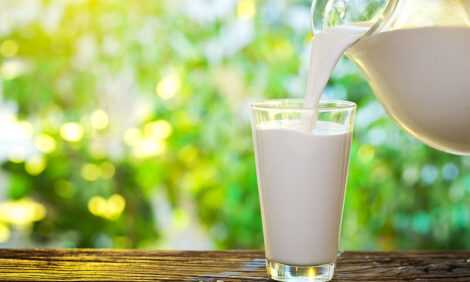



Countdown to Spring Calving Season
Experts from Purina Animal Nutrition say preparing your herd is essential for your animals to thrive over winter, so there are no surprises during spring calving.Countdowns are abundant toward the end of the year. Not only is there a Christmas and New Year’s countdown, there’s also the countdown to spring calving. While it may seem that calving is months away, now is the time to prepare. Planning ahead may allow you to spring forward into a successful calving season without any surprises.
“For spring calving herds, the winter months can be the most demanding,” said Chad Zehnder, PhD and cattle consultant with Purina Animal Nutrition.
“During this time, a cow is coming out of her second trimester and moving into the third, and the growing foetus and inclement weather puts increased demands on the cow. At the same time, we need to make sure she’s primed for a successful calving season.”

To best prepare for your herd’s winter needs, Mr Zehnder recommended the following:
1. Take stock of feed and labour resources
“Whether we’re using stored or harvested forages, stockpiled grass or winter range, we need to make sure we’re meeting the cow’s nutritional requirements,” said Mr Zehnder. He recommended that producers take an inventory of feed resources.
“We need to know both quantity and quality of forage so that we can plan ahead for winter supplementation needs.”
Mr Zehnder also recommends taking note of your labor resources.
“Supplementation strategies can range from feeding a total mixed ration (TMR) to utilising liquid or tub supplements,” said Mr Zehnder. “There’s a big difference in terms of labor needed for those two strategies.”
No matter which supplementation option you select, make sure it fits your animal’s nutritional needs and operation’s goals.
2. Determine body condition score (BCS)
“A key factor that will play into your feeding strategy is the BCS of your cow herd. Nutrition strategies will vary if you are working to maintain a BCS score or if you need to add weight to build up to those scores,” said Mr Zehnder.
If producers are looking to maintain BCS (assuming cows are at a BCS of 5.5 or 6), the diet and supplementation should match nutrients needed for maintenance. If producers need to improve BCS, the diet’s nutrients (primarily energy and protein) will need to increase to meet requirements for gain.
Those nutrient levels will depend on the amount of gain or BCS improvement needed, length of time to achieve an improvement in BCS and environment (temperature).
“Ideally, BCS would be assessed prior to winter, but it can be done as we enter winter and the third trimester. There’s still time to change BCS prior to calving,” said Mr Zehnder.
“Maintaining a consistent BCS year-round is the recommended strategy.”
3. Take a look at animal health protocols
Mr Zehnder also recommends working with a veterinarian to make sure that your animal health protocols are in place and up-to-date going into the winter months.
“There’s never a bad time to look over protocols, and it’s especially important as we go into calving to make sure everything from vaccinations and deworming to calf health protocols are in place and ready to go,” he said. “Come spring calving, you’ll be confident in the steps you’ve taken to prepare both the cow and her newborn calf for success.”
If producers don’t prepare for winter herd needs, they could see a situation where cows go backwards in BCS, creating potential rebreeding challenges.
“If a cow is not prepared going into her time of highest nutrient requirement – lactation - she will likely enter the breeding season in poor body condition, which could lead to trouble getting that cow rebred,” added Mr Zehnder.
“Evaluating your feed and labor resources, maintaining an acceptable BCS, and making sure your animal health protocols are up to par can help your herd thrive through the winter and into spring.”


